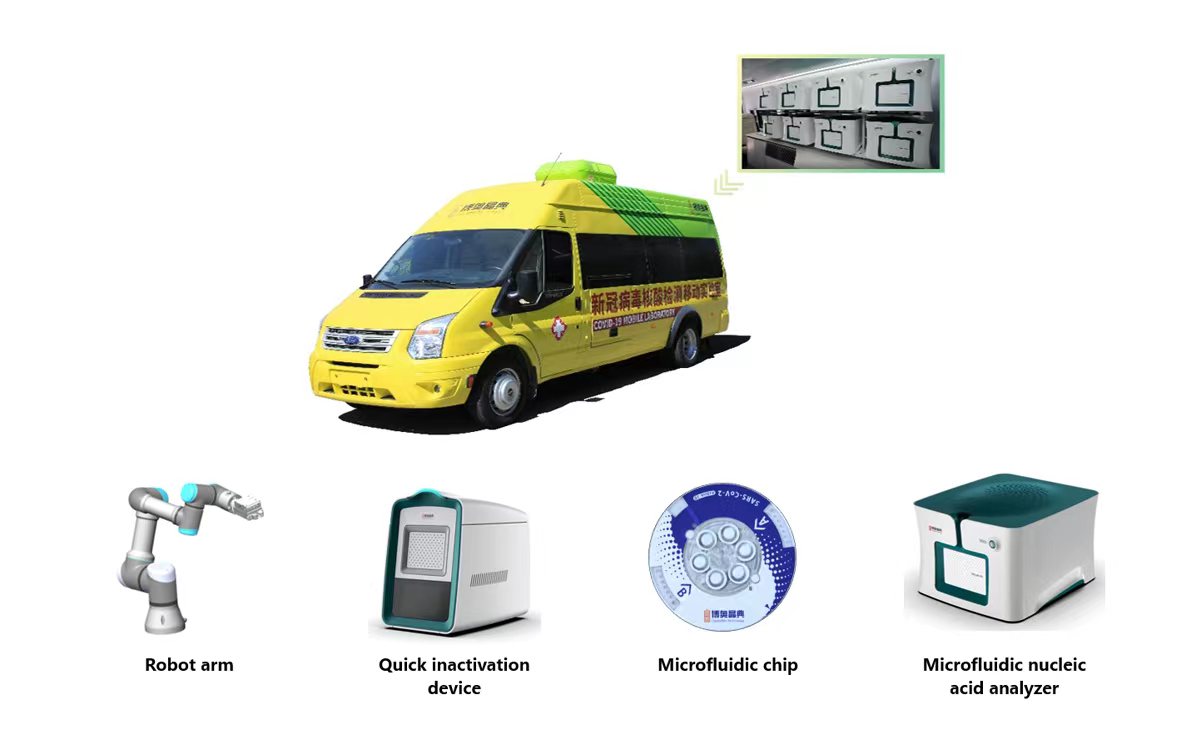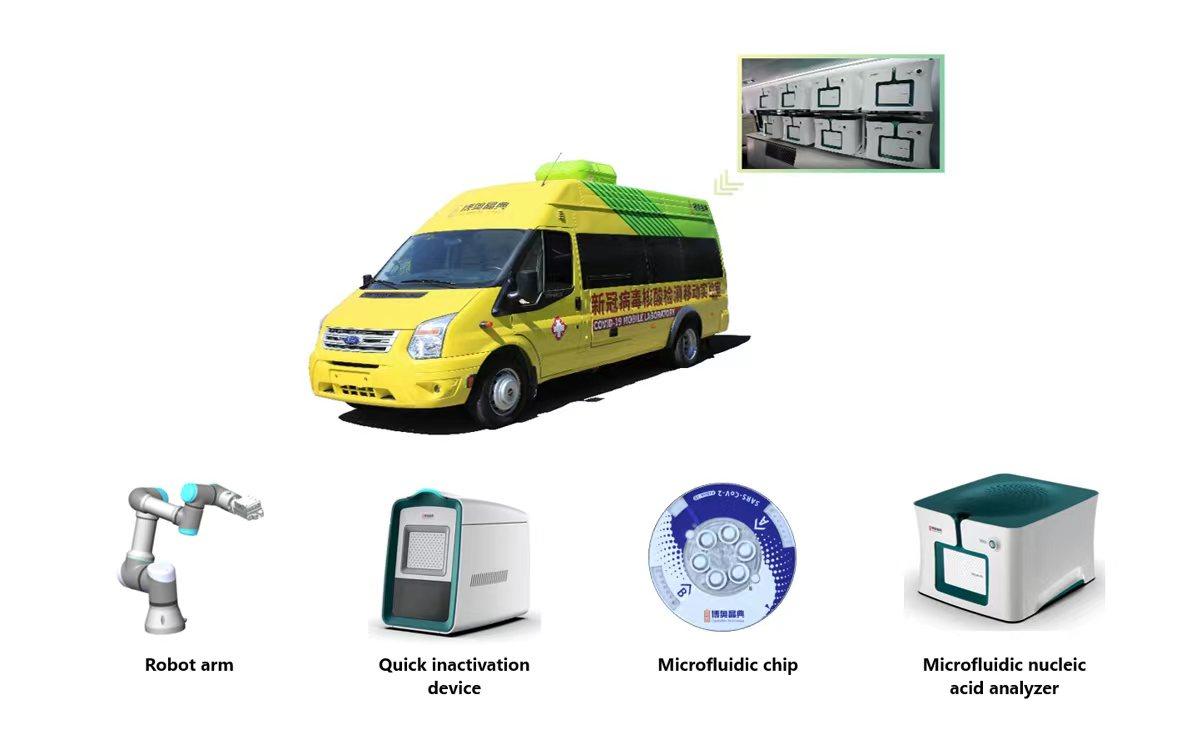![]()

![]()

Research Feature
A state-of-the-art diagnostic van can test up to 2,000 people a day, return results within 45 minutes with a very high sensitivity( limit of detection of 150 copies/mL), and reduces contact risks.
A new laboratory-on-wheels developed by Tsinghua University scientists allows for fast-turn around and highly-accurate COVID-19 testing, without the stress and risk of people with suspected coronavirus infections having to travel and wait long for a diagnosis.
Equipped with oropharyngeal (middle throat) swap sampling robots, a new type of virus inactivation device, integrated microfluidic nucleic acid analyzers and a 5G communication system for automated result reporting, the small-footprint mobile testing van can deliver results in under 45 minutes, with almost 100% accuracy and minimal human involvement.
At this point in the COVID-19 pandemic, the coronavirus is largely under control in China and in parts of the world that adopted aggressive containment measures, notes Jing Cheng, who headed the development of technology at Tsinghua. But outbreaks still flare up occasionally, demanding quick, accurate local testing responses - which is where the COVID-19 Mobile Laboratory comes in.
Biosafety first
Technologies that streamline and contain the complete workflow of the molecular diagnostic assays set the laboratory apart from others like it. “Unlike conventional systems that simply adopt the layout and instruments of typical biological laboratories to construct a ‘laboratory-on-a-truck’, our mobile laboratory uses state-of-the-art robotics and microfluidic technologies to create a system of automated and contained sample acquisition and processing,” explains Cheng.

The COVID-19 Mobile Laboratory is equipped with a six-axis robotic arm, a biosafety cabinet, quick pathogen inactivation device, microfluidic nucleic acid analyzers, and a 5G enabled information system to report results.
“The industrial design takes biosafety and functionality into consideration, enabling highly automated and self-sustained nucleic acid testing within a compact footprint,” explains Cheng, who is a member of the Chinese Academy of Engineering, director for National Engineering Research Center for Beijing Biochip Technology,and CEO for CapitalBio Corporation, a company that helped with the van’s development.
The microfluidic component of the van, for example, can extract and amplify coronavirus RNA much quicker than other genetic analysis instruments. The thermoelectric inactivation device, which relies on infrared radiation to precisely control sample temperatures, ensures biosafety without compromising the integrity of pathogen nucleic acids. And the six-axis sampling robot arm, guided by a digital camera with a force feedback system, can swab the oropharynx with minimal discomfort for test participants.
The mobile laboratory is also equipped with cables for plugging into a municipal electric supply, along with a power generator capable of delivering backup power. Plus, there are ventilation systems for both the biosafety cabinet and the laboratory cabin, and a water distribution system to avoid cross-contamination. In total, it can provide on-site tests for up to 2,000 people daily, requiring only two lab technicians and a driver for its operations.
Validated design
Cheng and his colleagues clinically validated their mobile testing set-up on more than 700 clinical samples collected from patients across China. Compared to the gold standard PCR testing platform, the Tsinghua system yielded the same result roughly 99% of the time, demonstrating the feasibility and accuracy of the approach. The researchers detailed their findings and experimental design in the journal Clinical Chemistry.
“The small footprint mobile testing facility enables molecular diagnostics outside people’s homes,” Cheng says. “In this way, not only can we save the time and identify potential patients on-site, but also reduce the risk of contamination during sample transportation to central laboratories.”
Reference
Xing, W., Wang J., Zhao, C., Wang, H., Bai, L. et al. A highly automated mobile laboratory for on-site molecular diagnostics in the COVID-19 pandemic. Clinical Chemistry 67, 672–683 (2021)
doi: 10.1093/clinchem/hvab027
Editor: Guo Lili
010-62793001
webmaster@tsinghua.edu.cn